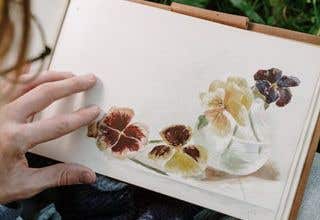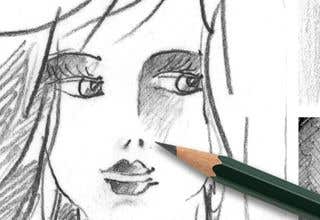Canvas art has been a cornerstone of the art world for centuries, providing artists with an ideal surface for their creations. As an essential element in painting, understanding the different aspects of canvas can help any artist enhance their work.

What is a Canvas?
Canvas is an extremely durable, plain-woven fabric that can be used for a range of purposes. Usually made from cotton, linen, or hemp, it’s popular as a painting surface when stretched across a wooden frame (called a ‘stretcher’) and coated with gesso to prevent the paint from coming into direct contact with the canvas fibres (which would eventually cause the canvas to decay).
Canvas has been used for art since the early 14th century, and one of the earliest surviving oils on canvas is a French Madonna with Angels from around 1410. It came into common usage in the 16th century during the Italian Renaissance, when Venetian painters were eager to make use of cheap, readily available supplies that took little time to dry.
Other advantages that made canvas popular are:
● Canvas allows for larger formats with easy portability as they are lightweight and can be rolled
● Canvas is less prone to warping and cracking than wood panels.
By the 17th century, canvas had spread throughout Northern Europe, and the trend continues today. Photographers are now in on the act too, beautifully displaying their photos on easy-to-hang canvas.
What is a Canvas Made Of?
Today most industrial canvases are made using cotton, which is not only economical but also easy to stretch and less prone to cracking and damage. The cotton is woven using a plain weave to increase its strength. How tightly the canvas is woven is up to the manufacturer and artist.
Once woven, canvas is then wrapped around wooden stretchers and prepared for paint using gesso, a mixture of plaster of Paris, glue, chalk, or pigment. Pre-prepared canvases can be purchased, however, some artists prefer to prepare their own. This gives the artist the flexibility to decide how much of the canvas weave is shown, and it also allows them to play around with texturing the canvas.
What to Look for in a Canvas
When choosing a canvas there are a number of things to consider. Fabric, texture, weight, priming—it all has an effect on the quality of the canvas and what kind of painting it is most suited to.
For smaller, more detailed work, the smooth surface of finely woven canvas is recommended. However, for broad brush strokes and large paintings, a rougher weave is ideal. Weight is determined by the density of the thread, and the higher the density, the higher the quality of the canvas. The ideal weight of cotton should be between 12-15 ounces.
Paints for Canvas
When both you and your canvas are ready, it’s time to create a masterpiece. To do this, you’ll need the right paint. Keep in mind that only certain paints will work on canvas, with three in particular working the best:
Acrylics
Acrylic paint is easy to work with, and it dries quickly. Plus, all you need to paint with acrylic is a primed canvas and a brush or palette knife. The thicker the type (sometimes called heavy body), the easier it gets. If you’re using a thin acrylic, know that you’ll need a lot more paint to create an opaque layer.
Oils
Oil paint is to canvas what salt is to pepper - a match made in heaven. The thick, viscous texture of oil paints calls for a heavy duty surface to rest on, and a primed canvas does just that. Choose either traditional oil paint or the water-soluble kind - either will work beautifully.
Gouache
Gouache will work on canvas, but bear in mind that it will require a fairly thick layer. Water should be kept to a minimum, as you’ll need your paint to be thick. Because of the difficulties with gouache, it’s best to reserve gouache painting on canvas for small-scale projects.
Watercolour
Although not as common, watercolours can be used on canvas if properly prepared with a watercolour ground primer. This type of paint is better suited for smooth canvas surfaces.
By understanding the various aspects of canvas art, from materials to paints, you can make informed decisions when selecting the perfect canvas for your next masterpiece.
Types of Canvas Materials
There are various types of canvas materials available, each with its own unique characteristics and benefits. Here, we'll explore some popular options and their suitability for different artists and mediums.
Canvas Panel
Canvas panels consist of pre-primed canvas sheets mounted onto rigid cardboard or wood. They are lightweight, portable, and relatively inexpensive, making them an excellent choice for beginners and artists on a budget. Since they are flat and sturdy, canvas panels are ideal for various mediums, including acrylics, oils, and mixed media.
For those just starting out, canvas panels can offer a high quality, more affordable alternative to stretched canvas. Usually made from primed cotton canvas that’s mounted onto a rigid board, panels are great for finding your feet in the art world. Lightweight and easy to carry, they’re also ideal for students who need to transport their art to and from school or university. Bear in mind that they don’t age well, hence why they’re good for practise. Our Jasart Canvas Panels are made of 100% cotton canvas board and are suitable for use with oils, acrylics, and alkyds.
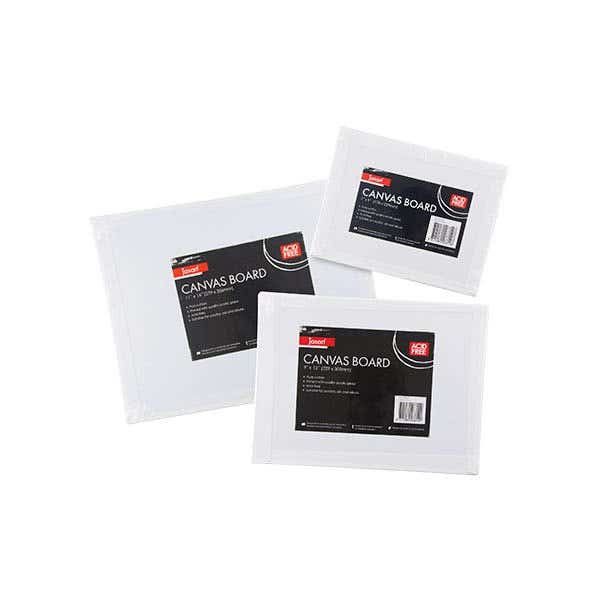
Stretched Canvas
Stretched canvas is ideal for artists who don’t have the tools to stretch their own canvas. This is because a stretched canvas is a regular canvas that has already been stretched over a stretcher and stapled to the thin wooden frame when you purchase it. Using stretched canvas reduces the chances that your artwork will be damaged as it holds the canvas intact, and the stretching is done by cutting-edge technology rather than by hand. However, this does make stretched canvas a more expensive option than other types of canvas. We offer stretched canvases in our canvas range, as well as a canvas stretching service at our Prahran store in Victoria.
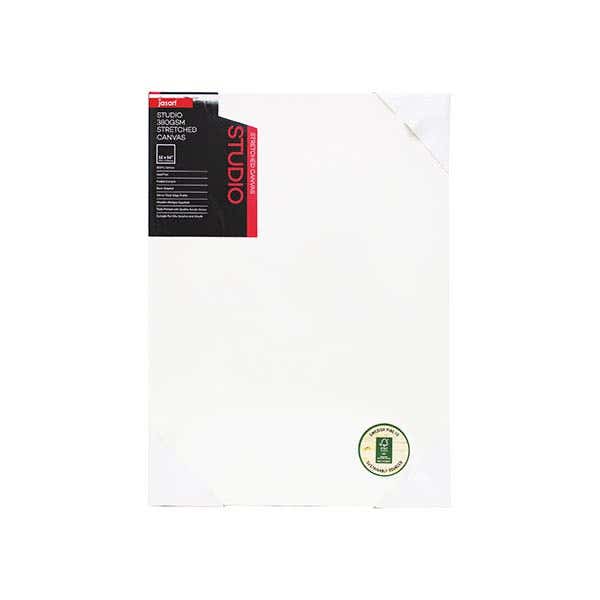
Canvas Pads
Canvas pads are made up of multiple sheets of primed canvas bound together like a sketchbook. They offer an affordable and convenient option for practising techniques, experimenting with new ideas, or creating smaller works of art. Canvas pads work well with various mediums, including acrylics, oils, and mixed media, making them a versatile choice for artists at any skill level.
Canvas pads are sheets of primed canvas that are bound within a book. Ideal for creating while on the move, the sheets used in many pads can be stretched or mounted at a later date. Similar to canvas panels, however, they don’t age as well and are therefore best for practice. Our Fredrix Canvas Pads are genuine medium-texture artist canvas and have 10 sheets per pad.
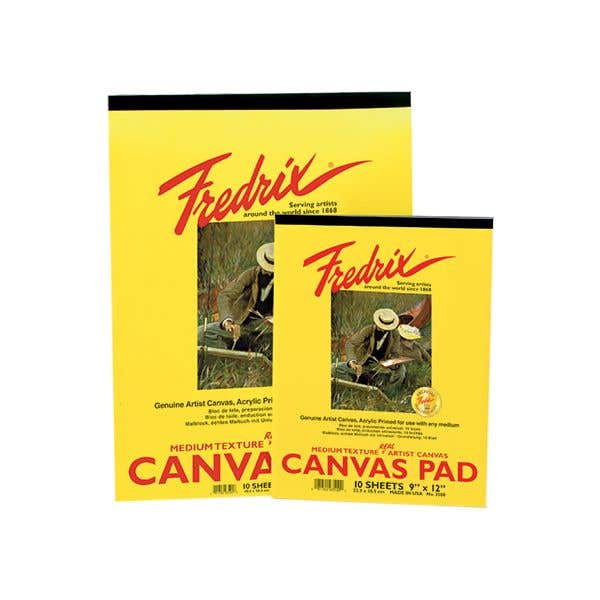
Canvas Rolls
Canvas rolls offer artists the flexibility to cut and customise the size of their canvas according to their needs. They are available in various materials, such as cotton, linen, or synthetic fibres, and can be purchased primed or unprimed. Canvas rolls are an economical choice for artists who work on large-scale projects or prefer to stretch their canvases themselves. They are suitable for various mediums, including acrylics, oils, and mixed media.
If you’d like to prepare and stretch your own canvas or you’d like to create a very large painting, canvas rolls are great. Made from either linen or cotton, they’re generally sold by the metre. Our Art Spectrum 8oz and 10oz canvas on the roll is available unprimed or coated with an acrylic primer for custom sized acrylic and oil painting.
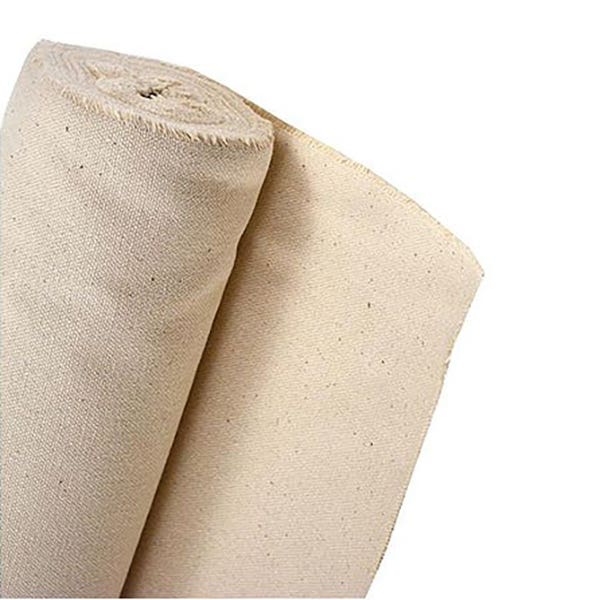
By understanding the different types of canvas materials available, artists can choose the best option for their specific needs and artistic preferences.
Canvas Preparation
Canvas Preparation refers to the process of preparing a canvas surface for painting or other artistic endeavours. It involves various steps to ensure that the canvas is ready for the application of paint or other media.
Importance of Priming the Canvas
Priming your canvas is essential for ensuring the longevity and vibrancy of your artwork. It seals the fibres, prevents paint from soaking into the fabric, and provides a smooth, even surface for paint to adhere to. Priming also helps reduce the effects of the canvas texture on the final painting.
Gesso Application Process
Gesso is the most commonly used primer for canvas preparation. To apply gesso:
● Place the canvas on a flat, clean surface.
● Stir the gesso well before use.
● Using a wide, flat brush, apply a thin, even layer of gesso over the entire canvas.
● Allow the first coat to dry completely (usually around 30 minutes to an hour).
● Apply additional coats as needed, allowing each coat to dry before applying the next.
● Lightly sand the surface with fine-grit sandpaper between coats for a smoother finish.
Alternative Primers and Their Effects
While gesso is the most popular primer, other options include:
● Acrylic primers: Provide a similar effect to gesso but may be more flexible and less absorbent.
● Oil-based primers: Ideal for oil paintings, as they create a barrier between the canvas and oil paint, preventing canvas deterioration.
● Clear primers: Allow the natural canvas colour and texture to show through while still providing a sealed surface for paint.
Choosing the Right Canvas for Your Artwork
Choosing the right canvas for your artwork is an essential step in creating a successful and long-lasting piece. The canvas you select will significantly impact the overall appearance, durability, and preservation of your artwork.
Factors to Consider When Selecting a Canvas
● Size: Choose a canvas size that suits the scale and composition of your artwork.
● Texture: Consider how the canvas texture will affect the final appearance of your painting. Smooth surfaces are ideal for detailed work, while rough textures add depth.
● Material: Select a canvas material based on your budget, prefered texture, and the longevity of your artwork.
● Stretching options: Decide whether you prefer pre-stretched canvases or want to stretch your own using canvas rolls.
Canvas Care and Maintenance
Canvas care and maintenance are important to ensure the longevity and preservation of your artwork. Proper care can prevent damage and maintain the original appearance of the canvas over time.
Painting Tips for Canvas
With the right paints, you can set up your canvas and supplies. Have everything you need within reach for an enjoyable experience. For brushes, choose brushes with long handles and stiff bristles. These will hold up better in your painting than a delicate watercolour brush. One brush shouldn’t do everything on the surface.
Prime your canvas if it hasn’t already been primed, and test your colours. You might like to do this by painting colour swatches on a canvas pad and letting them dry before moving onto the canvas. While they’re drying, consider applying an all-over tone to your canvas to instantly set the mood. For instance, a bright white canvas might not be conducive to a dark, stormy skyline.
You might also like to experiment with underpainting by creating an outline in an opposing colour that will add depth and texture to your finished piece even if it’s not directly visible when finished.
Drying Your Canvas
Even small canvases can prove unwieldy when wet, so before you start painting, make sure you have a safe spot for them to dry. Ideally, this should be on a non-stick surface.
Oil paint is all about oxidation, while acrylic paint is about evaporation. This should alter your drying time and the environment in which your painting dries. Generally speaking, you want a warm and dry environment for oil paints and a well ventilated environment for acrylic.
For the best drying of your work, consider purchasing a drying rack. If you choose one with wheels, you can dry multiple items efficiently in whichever environment you choose.
Tips for Cleaning and Preserving Your Canvas Artwork
● Dust your canvas gently with a soft brush or cloth to remove dirt and debris.
● Avoid using harsh chemicals or abrasive materials on your canvas.
● Repair small tears or punctures with canvas repair tape or adhesive patches.
Proper Storage Techniques
● Store canvases in a cool, dry place away from direct sunlight.
● Place acid-free paper or foam board between stacked canvases to prevent damage.
Framing and Displaying Canvas Art
Framing and displaying canvas art is an important aspect of presenting your artwork in a professional and visually appealing manner. Proper framing not only enhances the overall appearance of the artwork but also provides protection and support for the canvas.
Different Framing Options
● Traditional frames: Wooden or metal frames that enclose the entire canvas, often with a mat or glass front.
● Floater frames: Minimalist frames that create the illusion of the canvas floating within the frame.
● Gallery wrapping: Stretched canvas is wrapped around the stretcher bars, creating a clean, frameless appearance.
Hanging and Lighting Tips for Showcasing Your Artwork
● Hang your artwork at eye level for optimal viewing.
● Use picture hanging hardware appropriate for the weight and size of your canvas.
● Illuminate your artwork with track lighting or picture lights to enhance its visual impact.
Conclusion
In conclusion, understanding the history of canvas art, the various types of canvas materials, and proper preparation and care techniques can significantly improve an artist's experience with this versatile painting surface. From selecting the ideal size, texture, and material to framing and displaying your masterpiece, each decision plays a critical role in the final outcome.
As you embark on your artistic journey, don't be afraid to explore and experiment with different canvas options and painting techniques. The world of canvas art is vast and filled with endless possibilities. Embrace your creativity and let your imagination guide you in creating stunning works of art that will stand the test of time.
Ready to get painting? Eckersley’s has everything you need. Shop online today.
FAQ about Canvas
Q: What is a canvas?
A: A canvas is a versatile material commonly used for various purposes. It typically refers to a strong, durable fabric made from cotton, linen, or synthetic fibres. The term "canvas" can also refer to a piece of artwork created on such a fabric surface. In the context of art, a canvas serves as a support for painting or drawing. It is often stretched tightly over a wooden frame to provide stability and a flat working surface. Artists use different mediums, such as oil, acrylic, watercolour, or mixed media, to create their artwork on canvas. Canvases come in various sizes and shapes, ranging from small panels to large-scale installations. Additionally, the term "canvas" can also be used metaphorically to describe a blank or open space where ideas, creativity, or discussions can take place.
Q: What are the different types of canvas used for artwork?
A: There are various types of canvas used for artwork, including cotton canvas, linen canvas, and synthetic canvas. Cotton canvas is the most common and affordable option. It is lightweight and suitable for most painting styles. Linen canvas is known for its higher quality and durability. It is often preferred by professional artists for its smooth texture and ability to withstand heavy brushwork. Synthetic canvas, such as polyester or poly-cotton blends, is a more recent development. It offers increased durability, resistance to moisture, and affordability.
Q: How do I prepare a canvas for painting?
A: To prepare a canvas for painting, you can follow these steps:
If the canvas is pre-stretched and primed, ensure it is clean and free of dust.
If the canvas is unprimed or you want to add additional primer layers, apply a coat of gesso. Gesso provides a smooth, absorbent surface for the paint to adhere to. Apply it evenly using a brush or roller, and let it dry completely.
If there are any visible brush strokes or imperfections, you can sand the dried gesso lightly with fine-grit sandpaper and then remove any dust.
Your canvas is now ready for painting. You can start sketching or applying paint directly to the primed surface.
Q: Can I use canvas for mediums other than painting?
A: Yes, canvas can be used for various mediums other than painting. It is a versatile material suitable for techniques like drawing, mixed media, collage, and even embroidery. Canvas boards or panels can be used for sketching, charcoal drawings, or marker illustrations. Mixed media artists often incorporate collage elements, such as paper, fabric, or found objects, onto canvas surfaces. Additionally, some artists experiment with techniques such as image transfers, stitching, or incorporating textile fibres into their canvas-based artworks.
Q: How do I care for and preserve canvas artwork?
A: To care for and preserve canvas artwork, consider the following guidelines:
Avoid displaying the artwork in direct sunlight or areas with extreme temperature or humidity fluctuations, as they can cause fading, warping, or mould growth.
Keep the artwork away from moisture or water sources to prevent damage.
Dust the surface of the artwork regularly using a soft, dry cloth or a gentle brush.
If necessary, you can use a mild detergent or specialised art cleaners to remove stubborn stains. Test any cleaning product on a small, inconspicuous area first to ensure it doesn't damage the artwork.
When transporting or storing the artwork, protect it by wrapping it in acid-free paper and placing it in a sturdy, padded container.
If the canvas ever becomes loose or saggy, consult a professional art restorer to re-stretch or repair it.
Consider framing the canvas artwork under protective glass or acrylic to provide an additional layer of preservation.
Q: Can I paint on a canvas without stretching it?
A: Yes, it is possible to paint on a canvas without stretching it. Unstretched canvas, also known as canvas sheets or canvas pads, is available in various sizes and can be used for painting. It is a more flexible option and can be easily transported or stored. However, keep in mind that an unstretched canvas may have a tendency to warp or buckle when excessive moisture or heavy paint is applied. It is recommended to either mount the finished artwork on a rigid support or frame it under glass to ensure its longevity and stability.
Image by Freepik








